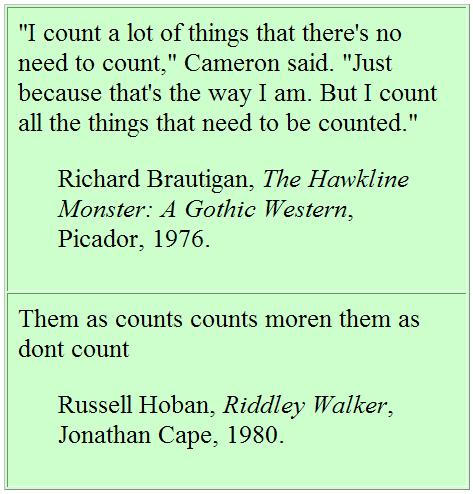From Peter J. Cameron's weblog today—
According to the Buddha,
Scholars speak in sixteen ways of the state of the soul after death. They say that it has form or is formless; has and has not form, or neither has nor has not form; it is finite or infinite; or both or neither; it has one mode of consciousness or several; has limited consciousness or infinite; is happy or miserable; or both or neither.
He does go on to say that such speculation is unprofitable; but bear with me for a moment.
With logical constructs such as “has and has not form, or neither has nor has not form”, it is perhaps a little difficult to see what is going on. But, while I hesitate to disagree with the Compassionate One, I think there are more than sixteen possibilities described here: how many?
Cameron's own answer (from problem solutions for his book Combinatorics)–
One could argue here that the numbers of choices should be multiplied, not added; there are 4 choices for form, 4 for finiteness, 2 for modes of consciousness, 2 for finiteness of consciousness, and 4 for happiness, total 28 = 256. (You may wish to consider whether all 256 are really possible.)
Related material– "What is 256 about?"
Some partial answers–
April 2, 2003 — The Question (lottery number)
May 2, 2003 — Zen and Language Games (page number)
August 4, 2003 — Venn's Trinity (power of two)
September 28, 2005 — Mathematical Narrative (page number)
October 26, 2005 — Human Conflict Number Five (chronomancy)
June 23, 2006 — Binary Geometry (power of two)
July 23, 2006 — Partitions (power of two)
October 3, 2006 — Hard Lessons (number of pages,
as counted in one review)
October 10, 2006 — Mate (lottery number)
October 8, 2008 — Serious Numbers (page number)
Quoted here Nov. 10, 2009—
Epigraphs at
Peter Cameron’s home page:

Happy birthday, Russell Hoban.



